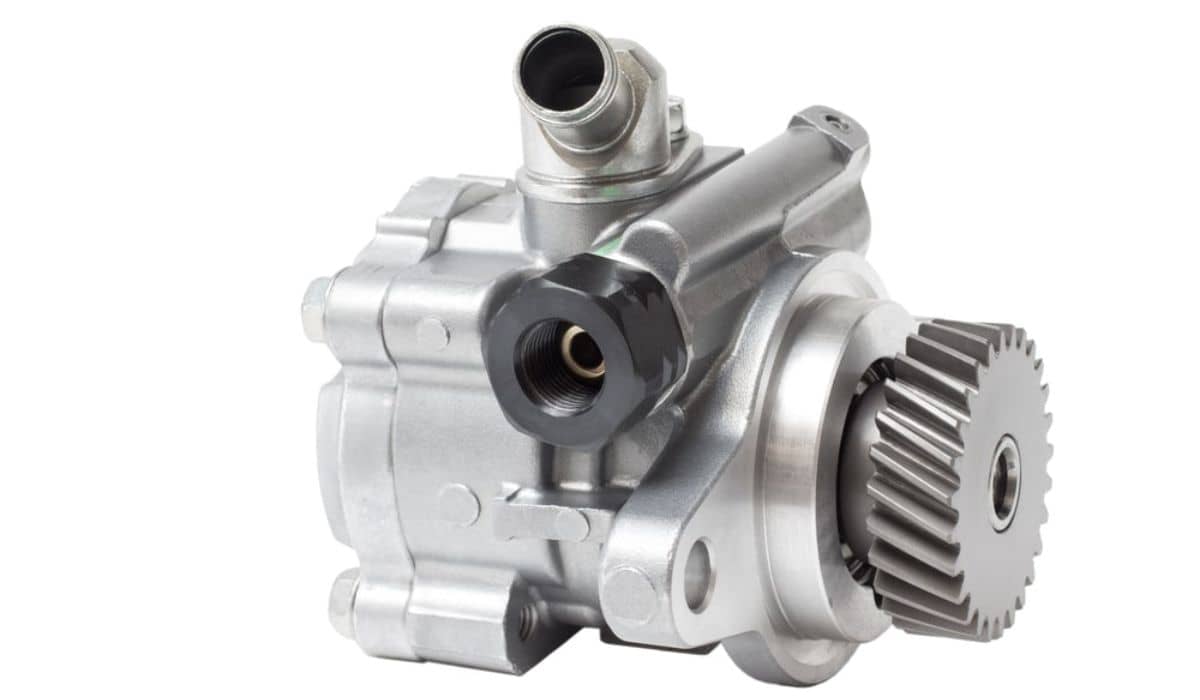The dance between the wheels of your car and the road is a delicate one. At the heart of this dance are two crucial components: the power steering pump and the rack and pinion.
But how to tell if power steering pump is bad or rack and pinion is acting up? Let’s plunge into the fascinating world of car mechanics, without the jargon, and explore this very topic.
Differences between the Power Steering Pump and Rack and Pinion
Power Steering Pump:
Think of this as the heart of your steering system. It pressurizes the fluid that aids in turning the wheels. Without it, steering would require considerable arm strength.
Rack and Pinion:
This is the system of gears that translates the rotational motion of the steering wheel into the linear motion needed to turn the wheels. It’s the messenger, taking orders from the steering wheel and ensuring the wheels follow suit.
Comparing the two, while the pump provides the necessary pressure, the rack and pinion do the actual turning. Both are essential for a functional power steering system.
The Basics: Power Steering Pump & Rack and Pinion
Your car’s power steering system is like your arm’s muscle. When you turn the steering wheel, the power steering pump supplies the force, much like your biceps and triceps helping you lift a heavy box.
The rack and pinion, on the other hand, translate that force to turn the wheels, similar to how your wrist and fingers would grip and maneuver that box. If either of these is in disrepair, steering can feel like a Herculean task.
Telltale Signs: Noise
Does your car groan, whine, or screech when you turn the wheel? It might not be just trying to voice its displeasure! A failing power steering pump often produces a whining noise.
On the contrary, a bad rack and pinion may lead to clunking sounds. Listening to your car is like being a car whisperer. It’s trying to tell you something; heed its call!
Symptoms of a Failing Power Steering Pump
| Symptom | Description |
|---|---|
| Whining Noise | A distinct whining or groaning sound when the steering wheel is turned. |
| Stiff Steering Wheel | Increased resistance when turning the steering wheel, especially at low speeds. |
| Fluid Leaks | Puddles or spots of power steering fluid beneath the car. Fluids may be reddish. |
| Erratic Power Steering Assist | Inconsistent steering assistance, sometimes feeling normal, then suddenly hard. |
| Foaming or Discolored Fluid | When checking the reservoir, the fluid may appear foamy or discolored due to air. |
Symptoms of a Failing Rack and Pinion
| Symptom | Description |
|---|---|
| Uneven Tire Wear | Tires wear out irregularly, especially on the inside or outside edges |
| Loose or Wandering Steering | Steering wheel feels loose, causing the car to "wander" or drift slightly while driving. |
| Knocking or Clunking Sounds | Distinct knocking or clunking noises when turning the steering wheel or going over bumps. |
| Fluid Leaks | Puddles or spots of power steering fluid, especially around the boots of the rack ends |
| Difficulty Steering | Resistance or difficulty when turning, particularly at certain angles. |
| Excessive Play in Wheel | Noticeable "play" or "slack" in the steering wheel before the wheels respond |
| Burning Oil Smell | Due to potential fluid leaks onto hot components causing an unusual odor |
Feel the Wheel: Stiffness & Vibrations
The next time you’re behind the wheel, pay attention to how it feels. If it’s stiffer than usual, especially at lower speeds, it might be the power steering pump.
Think of it as trying to open a jam jar; if the lid doesn’t budge, you know something’s off. Meanwhile, if you notice unusual vibrations or a “shuddery” feel while steering, that might point towards issues with the rack and pinion.
Leaks & The Mess Below
Cars, like humans, shouldn’t leak. If you spot a puddle under your car, particularly towards the front, it’s cause for concern. Power steering fluid is typically reddish or light brown.
If you find this mystery liquid, the power steering pump might be the culprit. But if the leak is more central, closer to the middle of the car, it might be the rack and pinion waving a red flag.
The Journey, Not Just the Turn: Wandering Wheels
Driving straight but feel like you’re veering off course? If your car has a mind of its own and “wanders” while you drive, this could be a hint. A malfunctioning rack and pinion can lead to unpredictable wheel movement. It’s as if your car is on a quest, and you’re not invited!
Uneven Tire Wear: The Silent Indicator
Often, cars communicate in subtle ways. Check your tires. If they’re wearing out unevenly, especially on the inside or outside edges, this can be a sign of a faulty rack and pinion. Tires are like the footprints of your car. If they’re uneven, they’re telling a story of something amiss.
The Play in the Wheel
Here’s a simple test. When parked, try moving your steering wheel left and right slightly. If there’s a noticeable “play” or “looseness” before the wheels respond, it could be indicative of a problem with the rack and pinion.
It’s akin to turning a door handle and the door not opening immediately; you know something’s off.
Fluid Levels & The Telltale Dipstick
Regularly check your power steering fluid levels. If it’s frequently low, even after topping up, it’s a surefire sign that either your power steering pump or the system has a leak.
The dipstick, often ignored, is like the unsung hero in this detective tale. It’s giving you valuable clues; all you need to do is look.
Repair Options
Power Steering Pump:
If it’s the culprit, you might need a replacement. This involves removing the old pump, flushing the system to remove contaminants, and installing a new one.
Rack and Pinion:
A more extensive job, it requires realigning the wheels post-replacement. Costs vary, but rack and pinion replacements are generally pricier than pump repairs.
Prevention
Prevention is better than cure! Regularly check fluid levels and ensure they’re topped up with the right type. Avoid hard steering actions, and be gentle over potholes or bumps. Regularly scheduled maintenance can catch potential issues before they escalate.
The Professional Touch: Mechanic’s Diagnosis
When in doubt, seek professional help. Mechanics have specialized tools to check the pressure levels and assess the health of your power steering system. Sometimes, our senses can deceive us, or the signs might be too subtle. In these cases, trust the experts.
FAQ
What is the primary difference between a power steering pump and the rack and pinion?
The power steering pump and rack-and-pinion provide steering system functions. The power steering pump’s heart generates pressure and fluid to ease steering.
Like arm muscles, it lifts objects. However, rack and pinion turns steering wheel rotation into wheel movement. Its wrist and fingers control direction and angle while moving or grabbing. Rack and pinion turn while pump powers.
Why is my steering wheel vibrating and feels loose when I drive?
Steering “shudder” may signal rack and pinion issues. Rack and pinion failure may cause a loose steering wheel or slow response. This is like turning a door handle and waiting for it to open—command and action are divorced.
My car has red fluid under it. What could cause it?
The reddish or light brown fluid is likely power steering. The fluid under your car, especially in the front, may indicate a power steering pump or hose and connection issue. Pump or system leaks reduce fluid levels, making power steering difficult and sometimes damaging.
My tires are wearing out unevenly. Could this be related to the steering system?
Yes, uneven tyre wear, especially on the inside or outside edges, may indicate rack and pinion trouble. Rack and pinion affect wheel alignment and movement.
If it breaks, tyres may wear unevenly. Your car’s tyres are its footsteps. Uneven or inconsistent indicates rack and pinion issues.
Is it expensive to replace the rack and pinion or the power steering pump?
Repair costs depend on your car’s make and model, local labour rates, and any additional parts or changes. Replace the rack and pinion more expensively than the power steering pump.
Relocating the wheels after rack and pinion replacement is harder. While expenses vary, it’s crucial to address these issues early because they might worsen and cost you more. Call a professional mechanic for estimates and advice.
Conclusion
Car issues might seem daunting, but understanding the signs and being vigilant can save you from bigger problems down the road. Main point is to know how to tell if power steering pump is bad or rack and pinion is the culprit.
Whether it’s the power steering pump or the rack and pinion, early detection is key. Keep in mind that your car, like any other machine, requires attention and care. So, tune in to its whispers, and it will serve you well for miles and miles.





